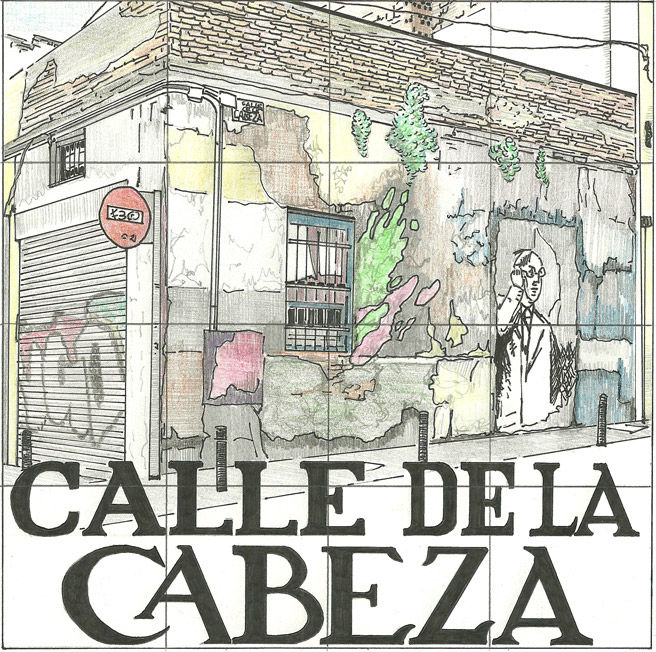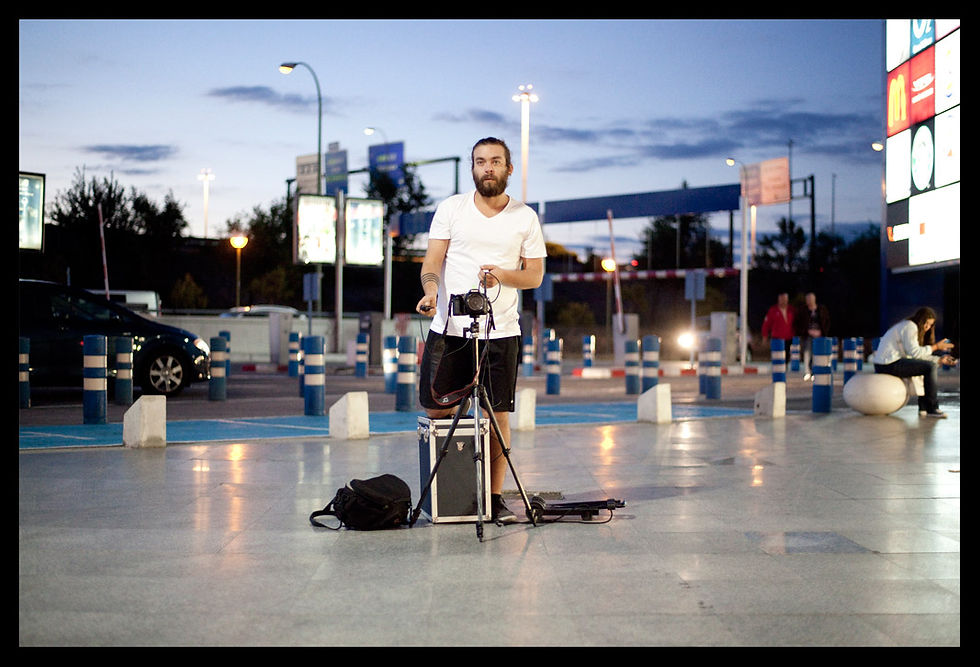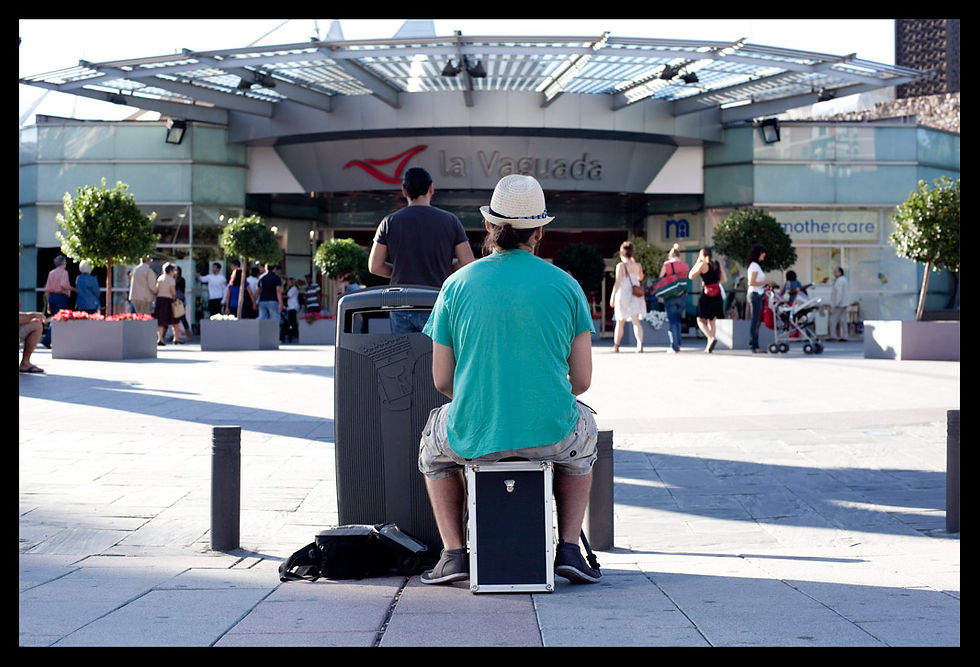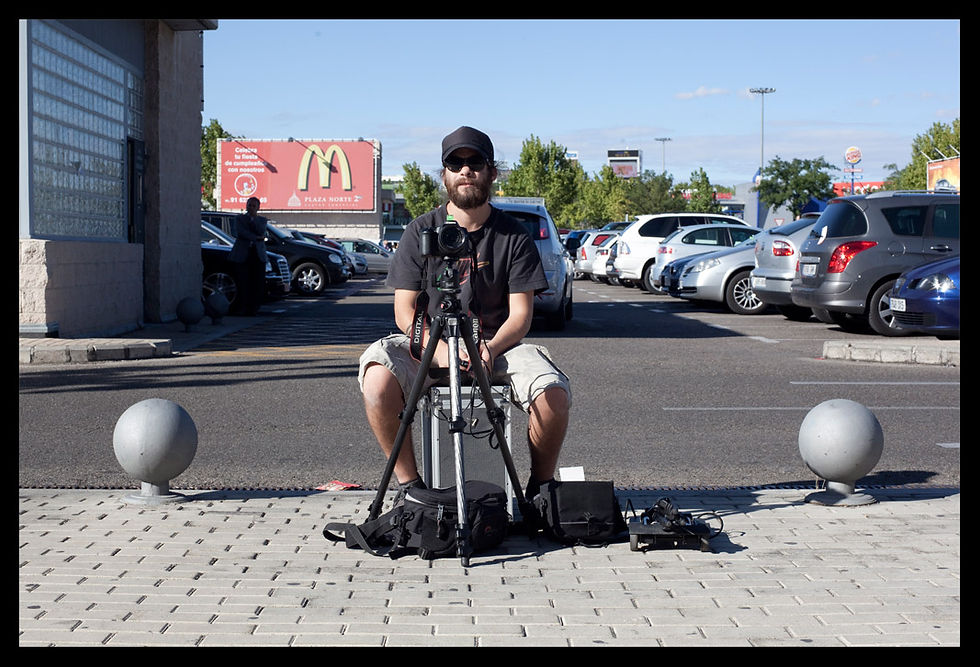Iván Pérez: "Warshow"
Warshow Deutschland is a project on the representation of the war.
The first part of the project was developed in Holland with visits to a dozen museums over three months thanks to a partnership with the "Vandeniewedinguen art space" in Tilburg. Some museums also representative of other countries such as the Imperial War Museum and the National Army Museum in London and the Atlantic Wall Museum in Belgium were part of this first phase of the project.
The visits in 2009 to some museums on the east coast of the United States located in Washington, New York, Masachusetts Conneticout and served as an approximation to learn particular vision of war museums across the Atlantic.
The work done in Berlin focused on Militärhistorisches Museum der Bundeswehr in Dresden and Berlin-Gatow Luftwaffen Bundeswehr Museum.
In studies of Karl Hofer in Berlin completed production on "Portraits of Soldiers" a piece composed by 105 portraits of soldiers as they are represented in the "Museums" military. These soldiers belong to armies of different countries and different eras but mainly to the first and second world war.
In these portraits the idea of soldiers have been reduced to a uniform, usually anonymous, dressed on a support ranging from more realistic characterizations and its total absence.
Some new images have also served to complete a part of the "Warshow" started years ago in Holland and they belong to images from different places in Europe and the United States.









David Trullo: "Weltschmerz"
Weltschmerz ('pain of the world') is an untranslatable expression that expresses that feeling ambivalent astonishment and horror of the Romantic artists. In this video photography project and currently intend to investigate the romantic feeling based on the work of German Romantic painters of the nineteenth century as Friedrich and other contemporary authors such as Wim Wenders, recomposing situations in photography and video from the places where these artists worked.
As seen in the figures that the vastness of the landscape in the romantic paintings of Friedrich, felt Weltschmerz, that sort of of unease, anxiety or grief cosmic literally 'pain of the world' or better 'world-weariness'.
Weltschmerz is a term coined by the German author Jean Paul and denotes the kind of feeling experienced by someone who understands that physical reality can not meet the demands of the imagination. This pessimistic view of the world was present in many authors such as Lord Byron and Heinrich Heine. It is also used to express the feeling of sadness that comes from the world's ills. The modern meaning of the word is associated with psychological pain caused when an individual weaknesses associated with the cruelty of the world around him, in the form of depression, escapism or alienation.
The German Romantic artists were specialists in this duality of feeling for the landscape. For some nostalgia, and another horror, that feeling of 'irreparable loss' spoken of Baudelaire. The Romantic experiences both euphoria of acting as a prophet like depression to cope with everyday experience.
Romanticism, a style that is more a mental attitude. Therefore, the 'Romantic' assumes a role that still makes sense today, and that recurs constantly in the art.
Modern man is at a similar crossroads, which are mixed conflicting feelings of loss and emptiness, while the wonder of nature: the effects of large-scale urbanization, the return to nature of environmentalists, the backlash of Mother Earth (tsunamis, droughts), global warming ...
The Romantic contemporary observer assumed that 'culture of disaster' because of television and new technologies and observes, this time from home, ruined landscape that I did not even choose.
In this photo project and intend to recreate scenes video 'romantic' based on works such as' The Walker in the Sea of Fog "by Caspar David Friedrich and the figure of the fallen angel as a key element in the ideology of the nineteenth century, adapted by artists today as Murnau and Wenders.









Diana Larrea: "Calles distinguidas"
The project was to make a subtle urban intervention in the Madrid neighborhood of Lavapies in order to point to the undoubted passers who has been abandoned this area of the center of the capital. Based on an existing decorative element such as tiles plates called the streets of downtown Madrid, the proposal was to produce and install in some streets of Lavapies some new plates made by the artist that have highlighted the current look of helplessness to so many buildings in the neighborhood. Thus, the author sought to highlight the indifference with which the municipal authorities dealing with this historical enclave.






























Álvaro Sastre Rojas: "Control de Masas"
Mass Control The project focuses on the phenomenon of consumerism and suggests the analogy of power which today has the power it once had religion.
For this scenario takes Madrid as representative of many other consumer societies around the world, and is based on the concept of globalization to justify that this scenario is just enough to the worldwide phenomenon.
This is a project consisting of photographs and videos that will be made in malls located in the city of Madrid, and then digitally processed.


















Madrid Procesos '10
